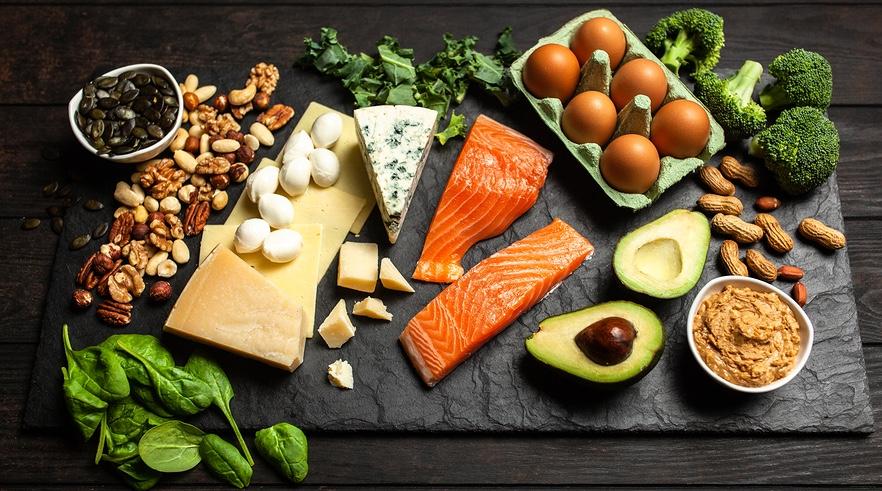A keto or ketogenic diet is a low-carbohydrate diet, in which your body turns into a real “fat-burning machine.” This diet can help you lose weight, but what does a ketogenic diet consist of and does it really work?
More than just a diet, those who support the keto diet tend to define it as a nutritional strategy based on the reduction of carbohydrates and associated with the increase in the proportion of fat in the diet. (Generally 75% fat and 25% between carbohydrates and proteins) This induces the body to a defined state of “ketosis.” In this state, the organism is forced to produce the glucose necessary for survival and increase the energy consumption of the fats contained in the adipose tissue.
Therefore, the ketogenic diet would exploit the body’s ability to convert fat into energy. Its peculiar because of its use of supplements so that the organism does not miss anything especially during the initial period of the diet.
What Does “Ketogenic” Mean?
The “ketogenic” name derives from the fact that this diet makes the body produce small fuel molecules called “ketones,” an alternative fuel for the body used when glucose is scarce. Our body can use either glucose or ketones (the alternative fuel) as metabolic fuel. When carbohydrates are not available or if there’s not enough to produce glucose (i.e. in the case of fasting), the body produces ketones from fat as an alternative energy source.
Furthermore, ketones are produced if very little carbohydrates (which are rapidly decomposed into blood sugar) are ingested and only moderate amounts of protein (excess protein can also be converted into blood sugar).
Ketones are produced in the liver by fat and as the fuel they are also used throughout the body including the brain.
When the body produces ketones, it is “in ketosis.” The fastest way to get there is complete fasting. So we can say that the ketogenic diet (by limiting carbohydrates), mimics the metabolic state of fasting, but it is impossible to follow it forever.
What is the Ketogenic Diet and How Does it Work?
The ketogenic diet is a dietary style that induces the body to form ketone bodies by itself. Those acidic substances such as beta-hydroxybutyrate, acetone, and acetoacetic acid consist of the keto diet. The production of ketone bodies occurs when a little bit of sugar is taken in. In this case, the body and the brain begin to make use of ketone bodies as a source of energy.
In other words, ketone bodies reach a higher level than a normal condition. Their excess, responsible among other things such as lowering blood pH is called ketosis. The presence of ketone bodies in the blood has different effects on the body, such as a rapid weight loss.
In the medical field, the ketogenic diet is used in cases of epilepsy because it has been observed that it would be able to seduce the crises. Meanwhile, the application of the diet to other pathologies is being studied.
There is a tendency to use this diet simply to lose weight, and people underestimate that it is still a regime that must be instructed by a specialized doctor and often needs to be accompanied by some supplements.
The Ketogenic Diet as a Non-Pharmacological Medical Therapy
Since the ketone bodies can be used by the brain as an alternative fuel to glucose, they form the basis of the therapy of choice for the GLUT1 deficiency syndrome. The synthesis of the glucose transporter to the brain is genetically deficient (it is a disease in which there is an alteration in the use of carbohydrates and deficit in the availability to create energy in the brain).
But originally the ketogenic diet was developed at the beginning of the last century to treat the drug-resistant forms of epilepsy in children. In fact, the condition of ketosis or ketoacidosis would be able to reduce the manifestations and severity of convulsive seizures.
Therefore, to reach the state of ketosis it is necessary to eat foods that do not contain carbohydrates, limit those that bring few, and avoid the foods that are rich in them.
The foods that can be eaten in the ketogenic diet are meat, seafood, eggs, cheese, fats, seasoning oils, and vegetables.
It is best t avoid cereal, potatoes, derivatives, legumes, soft drinks, and sweets.
Like many similar dietary regimes, even the ketogenic diet is an unbalanced diet that tends to limit the consumption of some very important nutrients. Therefore, this diet can lead to many disadvantages, most of which depend on the levels of ketone bodies present in the blood.
Beyond the syndrome called “keto flu,” which is a condition of generalized discomfort caused by the metabolic imbalance still not completely compensated by the organism — the Department of Public Health of the University of Pavia has indicated the various damages to short and long term that can derive from a similar food style. Although used as a “therapy,” it can have some side effects.
Major Short-Term Complications:
Nausea
Vomiting
Diarrhea
Lack of Appetite
Drowsiness
ipoglicemiaDis
Dehydration
Acidosis (Increase in Acidic Substances in the Blood)
Major Long-Term Complications:
Constipation
Hyperuricemia (Increased Uric Acid in the Blood)
Hypocalcemia (Decrease in the Level of Calcium in the Blood) Hypoproteinemia (Decrease in the Amount of Protein in the Blood)
Kidney Stones (Formation of Stones in the Urinary Tract)
Acidosis (Increase in Acidic Substances in the Blood)
Growth Retardation
People Who Cannot Follow the Ketogenic Diet:
Take diabetes medications (such as insulin)
Take medicine for hypertension
Breastfeeding
Credit:

